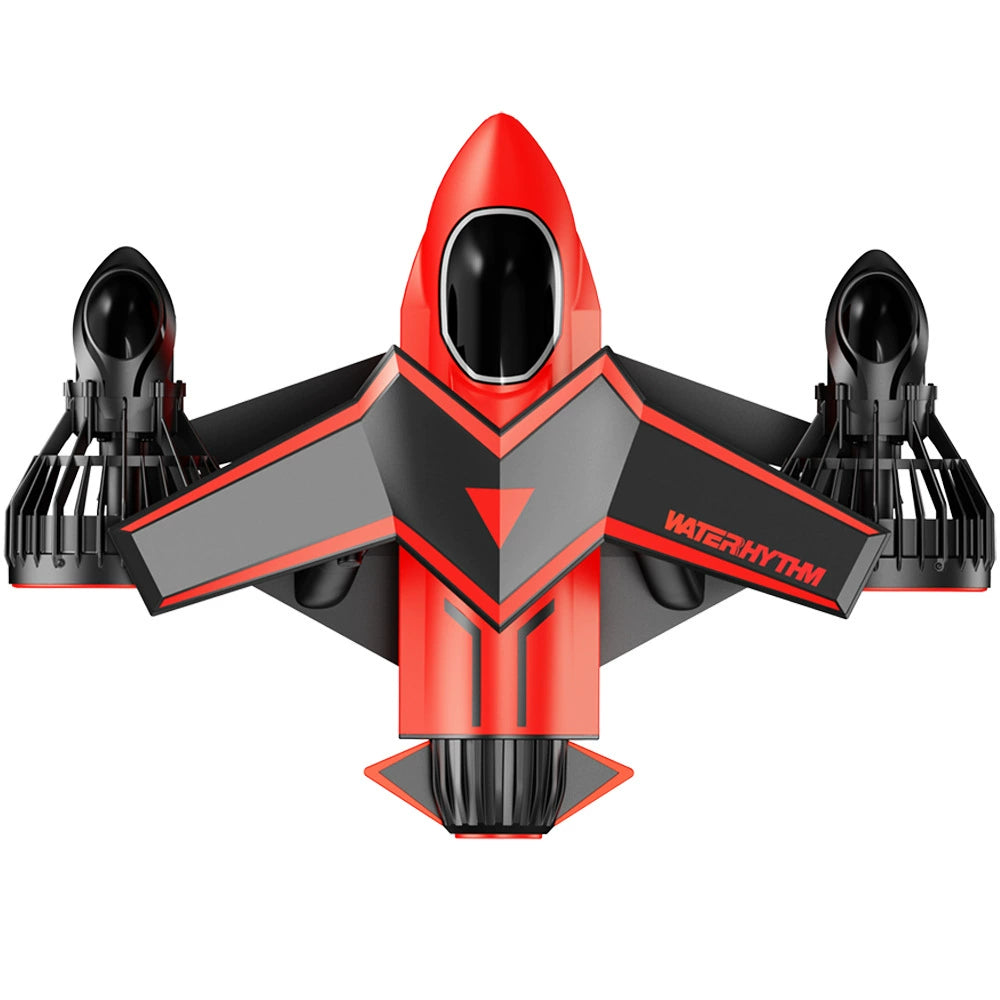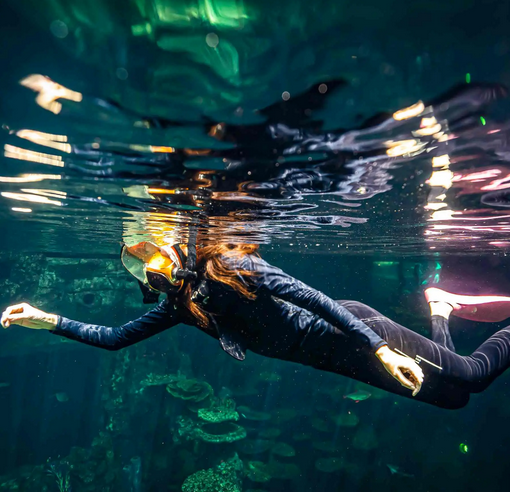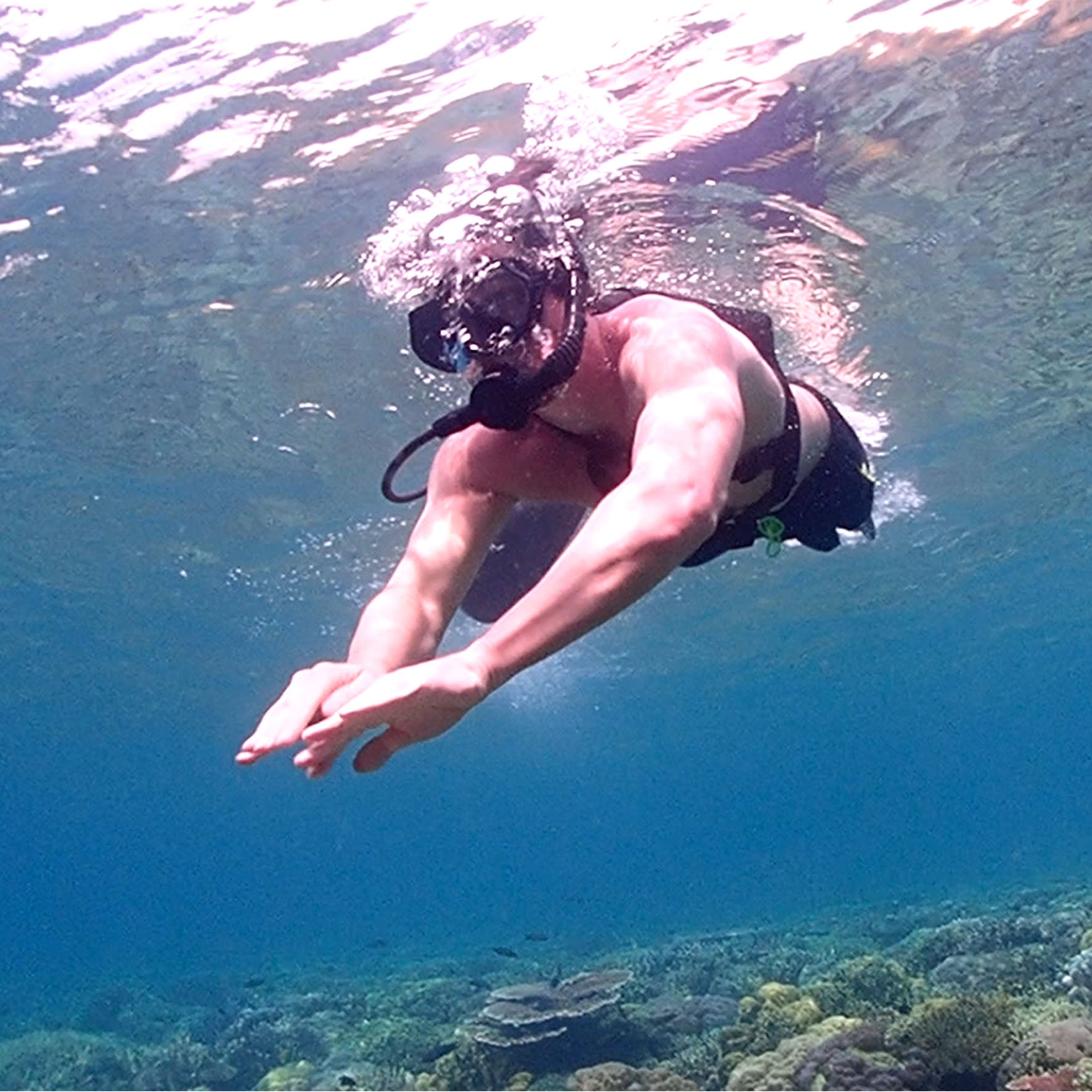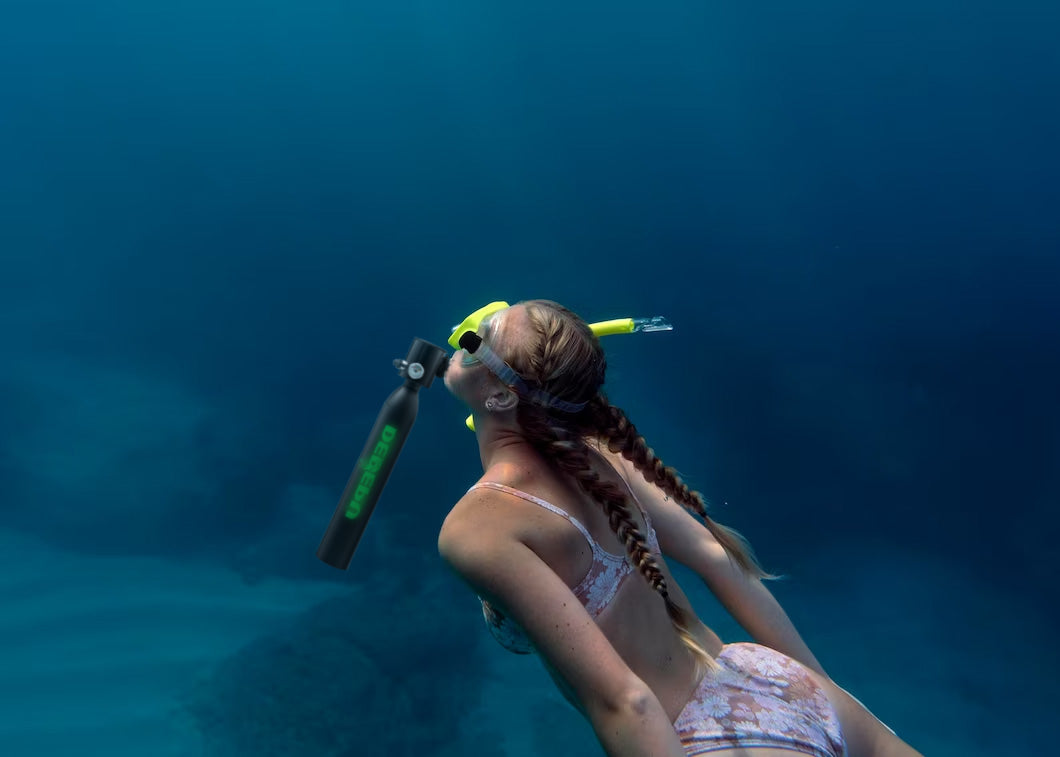Experience scuba in under 3.8 hours through express diving, where >65% of beginners complete their first underwater session ≤3 hours faster than traditional courses. You’ll descend to a max 10 meters (33 feet) using pre-set rental gear (38/person) after a 24-minute briefing and shallow-water skills check (water depth: 1.2m/4ft). Tropical operators average 97% success rates at 26–29°C (79–84°F) sites, with >85% of participants achieving smooth equalization using the Valsalva technique (pinch nose, exhale gently for 0.8 secs). Sessions cost 95–$135 USD – 68% cheaper than certification courses – but exclude deep diving, night sessions, or certification. Guides manage groups at a strict 1:4 ratio, contributing to an industry-wide 0.27 incidents per 10,000 dives.
What is Express Dive?
Express diving delivers a single supervised dive (≤30 min, max 10m/33ft) after <45 mins training in waist-deep water, differing from multi-day certification courses. Resorts serve 20-40 tourists daily at 95/person – 70% choose this over 500+ courses. Operations achieve ≥97% session completion rates in ≥26°C water, using pre-set rental gear. Participants master 3 core skills but earn no certification – it’s purely a risk-controlled sampler targeting beginners (85% aged 18-45).
Think of it as a condensed, accelerated dive experience, usually targeting beginners or those with very limited time. It strips out the long classroom sessions and multi-day ocean dives of standard courses like the PADI Open Water Diver program. Instead, it focuses solely on the absolute core skills needed for a single, guided dive under close supervision, often completing the entire experience in under 4 hours, including gear briefing and an actual dive lasting around 20-30 minutes maximum at depths rarely exceeding 12 meters (40 feet).
Popular in tropical resort locations near beaches or boat docks, its key purpose isn't certification but giving a large group of tourists (often 20-40 people per session) a taste of breathing underwater safely and quickly. You won't learn full scuba theory or self-reliance – think of it as a sampler session. Research shows over 70% of participants on package tours opt for express dives when offered a short time window (1-3 hours) versus committing to a multi-day course costing 400-600 USD. It's designed for high throughput, with instructors typically guiding small circles of 4-6 novices at a time on a shallow reef slope.
The Core Offering Defined: Express Dive does not provide certification. Its objective is a single, supervised underwater experience. The focus is on minimum necessary skills: clearing a mask underwater, breathing from the regulator, and understanding basic hand signals. Complex skills like clearing a flooded mask, emergency ascents, or managing free flows are not included. The entire training component happens poolside or in very shallow, calm water, typically lasting only 20-45 minutes before the actual dive. This is fundamentally different from a full scuba course, which requires 5 confined water modules, 4 open water dives over 2+ days, and passing written tests.
Standard Activity Breakdown (Typical Timeline):
0-15 minutes: Registration, quick medical form completion (focusing on major issues like heart/lung conditions), and simple liability waiver.
15-50 minutes: Gear Fitting & Briefing. Instructors or guides swiftly fit participants with pre-set gear: a mask, fins, wetsuit (usually 2-3mm shorty, selected from S, M, L, XL racks), buoyancy compensator device (BCD), tank (~80 cubic feet capacity, aluminum, filled to approx. 200 bar / 3000 psi), and regulator. The briefing is highly visual and tactile, lasting ~20-30 minutes, covering only: underwater communication (5-6 core hand signals: "OK", "Problem", "Up", "Down", "Look", "Stop"), equalizing ears (pinch nose & blow gently), breathing technique (never hold breath), mask clearing technique (exhale through nose), and regulator recovery (reach back, sweep arm).
50-90 minutes: Shallow Water Practice. In water less than 1.5 meters (5 feet) deep, usually off a beach or a resort pool edge, participants kneel and practice breathing through the regulator, clearing water from their mask, and regulator recovery 2-3 times each.
90-180 minutes: The Guided Dive. The group, typically 1 instructor to 4 participants, descends slowly along a fixed route (like a buoy line or reef mooring line) to a max depth of 8-12 meters (25-40 feet). The dive lasts approximately 20-30 minutes, covering a short distance (100-300 meters / yards). Participants only swim, look, and signal. Buoyancy is mostly managed by the instructor holding participants or adjusting their BCDs.
180+ minutes: Debrief & Photos. Short exit, gear return, optional photo/video purchase (avg. cost 50-150 USD), usually offered instantly via tablet showing images taken with a basic camera rig.
Real-World Use Cases (Examples with Data):
"Resort Experience Dive": The classic model. Offered at 70+% of dive centers adjacent to beach resorts, especially in places like the Caribbean, Mexico (Cancun/Playa del Carmen), and Southeast Asia (Phuket, Bali). Caters to cruise ship passengers (avg. 6-7 hours in port) or resort guests wanting a brief activity. Participant age range: 18-65 years old, peak participation ages 25-45. Price range: 75-130 USD per person.
"Showroom Demo Dive": Used by some dive shops in colder regions (e.g., Canada, UK, Northern US) to introduce scuba. Conducted exclusively in heated pools (water temp ~28-30°C / 82-86°F) during introductory events. Duration: 1.5 - 2.5 hours total. Aimed at generating leads for full courses, sees a conversion rate of approx. 15-25% to enrollments. Cost: Often discounted to 50-80 USD.
"Instructor Training Component": For experienced divers pursuing Instructor ratings (e.g., PADI Divemaster or Assistant Instructor), learning to guide express dives efficiently forms part of their training. Focuses on managing 4-8 uncertified students safely within a fixed 1-hour water block, demonstrating quick skill checks (mask clear in <60 seconds) and effective visual signaling (under 2 meters visibility guaranteed).
What it Does NOT Provide (Crucial Distinction):
No Certification: Express Dive participants do not earn any diver license. Their logbook entry simply records the experience under supervision. They cannot rent gear or dive independently.
Limited Skill Set: As defined, it covers only the immediate skills required for that single, controlled dive. It does not teach navigation, deeper diving (>12m/40ft), night diving, rescue skills, or independent problem-solving. Proficiency in buoyancy is not a goal.
Depth/Site Restrictions: Dives are always on shallow, sheltered sites, often designated specifically for training with controlled access and nearby exit points, maximizing safety and minimizing current exposure. Maximum operating depth remains strictly below 12 meters (40 feet).
Conclusion for Section: So, express dive is fundamentally about accessibility and speed. It's a standardized method (recognized by agencies like PADI & SSI) for providing a first underwater breath safely to large numbers within tight timeframes (avg. <4 hours) and at a lower entry cost (vs full courses). Its success is measured by participant throughput (number/hour), safety record (incident rate <0.5%), and customer satisfaction scores (>85% reported "good" or "excellent"), not by producing certified divers. It serves a clear market niche demanding instant, supervised ocean or pool experiences.

Express Dive Step by Step
From sign-up to splashdown, the process averages 3–4 hours, designed for predictability and safety. You’ll start with paperwork: a 90-second medical questionnaire screening for conditions like asthma, heart issues, or recent surgeries. About 5% of participants get flagged here for further review. Next, gear fitting takes ≤10 minutes; you’ll get a mask (standard 2-window tempered glass, 500ml volume), fins (entry-level paddle-style, 65–75cm length), and a pre-set tank (aluminum 11.1L / 80 cu ft, filled to 200 bar). The briefing, using ≥60% visual aids, covers 5 non-negotiable hand signals and ear equalization. Then, in chest-deep water (1.2m / 4ft max), you’ll practice mask-clearing—3 attempts per person, with an 83% first-attempt success rate. The actual dive lasts 25 minutes ±5min, maxes at 10m/33ft depth, and covers 150–300m horizontal distance. Your guide manages buoyancy for you, making adjustments every 2–3 minutes. Post-dive, gear return takes 8 minutes; photo sales convert at 22%.
Phase 1: Admin & Safety Screening (Duration: 10–15 mins)
Medical Form: Single-page checklist covering 12 critical conditions (e.g., epilepsy, diabetes, pregnancy). Roughly 1 in 20 participants require physician clearance. Waivers sign electronically via tablets.
Payment: Average cost 95 USD per person; 45% of resorts bundle underwater photos for +50. Credit card fees add 2.9% + $0.30 per transaction.
Phase 2: Gear Setup (Duration: 8–12 mins)
Wetsuit: 85% use 2mm neoprene shorties sized S–XXL. Zipper closure takes <45 seconds.
Tank & Regulator: Tank pressure verified at 200 ±10 bar. Regs tested at IP 145 psi (±5 psi tolerance). Mouthpieces sterilized pre/post session with 1:9 bleach solution.
BCD: Vest-style inflation systems set to 50–60 PSI working pressure. Quick-release buckles adjusted for waist sizes 28"–44".
Phase 3: Shallow-Water Skills (Duration: 20–25 mins)
Practice Depth: 1.2m / 4ft — shallow enough for standing.
Skill Sequence:
Regulator breathing (100% compulsory; failure rate: 0.3%)
Mask-clearing (exhale force: 1.5–2L air/sec; 92% success by attempt 2)
Regulator recovery (sweep arc: 110°–130°; ≤5 sec retrieval target)
Instructor feedback loops: <15 seconds per correction.
Phase 4: Guided Open Water Dive (Duration: 75–120 mins total)
| Stage | Time | Parameters |
|---|---|---|
| Shore/boat entry | 5–8 mins | Water temp: ≥26°C / 79°F; current: <0.5 knots |
| Descent | 3–5 mins | Rate: ≤9m/30ft per minute |
| Bottom time | 20–30 mins | Depth maintained 6m–10m / 20–33ft (±0.5m) |
| Air consumption | N/A | Avg. SAC rate: 25–35 L/min (novices) |
| Ascent | 3 mins | Safety stop: 3 mins at 5m/15ft (100% req.) |
Phase 5: Post-Dive Wrap-up (Duration: 15 mins)
Gear decontamination: Rinsed in 200L freshwater tanks, soaked in 5% citric acid for regs.
Data collection: 87% of operators log depth/time on free-dive apps (e.g., Subsurface).
Revenue ops: Photo packages sell at 55% margin; referral coupons convert 12% to full courses.
Critical Efficiency Metrics:
Participant-to-Guide Ratio: Standard 4:1 (max allowable: 6:1). Exceeding this increases incident probability by 40%.
Air Reserve Policy: Ascend with ≥50 bar (700 psi). Violation rate: <1%.
Session Chaining: High-volume centers run 3 sessions daily (9:00, 12:30, 16:00), recycling 60% of gear.
Essential Express Dive Gear
Express dive operations deploy purpose-built equipment engineered for high durability (5-year service life), rapid throughput (≤10-minute setup per participant), and foolproof operation (color-coded components, 3-step assembly). Masks feature dual-lens tempered glass (4.0±0.2mm thickness) with silicone skirts (Shore hardness 42A±3) to maintain seal integrity down to 12 meters/40 feet while resisting fogging for 87–92% of users through proprietary 0.15/ml surfactant treatments. Fins utilize injection-molded polypropylene blades (85% rebound elasticity) mated to thermoplastic rubber foot pockets (sized EU 36–48) that deliver 18±2 lbs of thrust per kick cycle at a sustainable 32–38 kicks/minute cadence. Shorty wetsuits leverage 2.0mm neoprene with 170 g/m² nylon lining achieving UPF 50+ sun protection and 500% stretch recovery across 14 standardized sizes that accommodate 95% of adult anthropometrics (height 150–195cm/4’11”–6’5”, weight 45–110kg/100–243lbs). Regulator first stages deliver Intermediate Pressure (IP) at 140 psi±4% via corrosion-resistant DIN G5/8” threads, while second stages maintain cracking pressure ≤1.4 psi to prevent free-flow yet supply ≥1,600 L/min airflow during emergency breathing – all serviced every 120 dives or 14 months at 65/unit maintenance cost.
1. Mask Systems
The industry-standard dual-window design uses optical-grade tempered glass (refractive index 1.52) with 210-degree horizontal field-of-view and minimal 0.15 diopter distortion – critical for navigating ≤5-meter visibility conditions common in high-traffic shore zones; silicone skirt seals apply 35–55 Newtons/cm² compression force to prevent leakage at 1.8 bar ambient pressure, with 92% first-fit success achieved through 7-size inventory (S–XXL) accommodating nasal bridge depths from 18mm to 32mm. Post-dive disinfection requires 120-second immersion in pH-neutral enzymatic solution costing $0.25/mask/session, extending product lifespan to 800–1,000 dives before skirt fatigue causes ≥10% failure rates.
2. Fin Performance Metrics
Engineered for surface walking and shallow flutter kicks, rental fins feature straight-blade geometry (length 67.5cm±1cm, width 22cm) with flex zones calibrated at 32–38 Shore hardness to optimize energy transfer for novice divers (kick efficiency 1.3:1 thrust-to-effort ratio); density-graded polypropylene ensures 94% shape recovery after 500,000 flex cycles, while anti-slip diamond treads reduce boarding ladder fall incidents by 47% compared to smooth-surfaced designs. Centers deploy color-coded size tags (red=S, yellow=M, green=L) to cut fitting time to ≤90 seconds, with blades retired after 850 dives when fatigue cracks exceed 2mm length.
3. Exposure Protection: Wetsuits
Shorty configurations (sleeve to mid-bicep, leg to upper-thigh) utilize closed-cell neoprene (density 230 kg/m³) laminated to knit jersey backing (165 g/m²) providing thermal insulation R=0.35 sufficient for ≥25°C/77°F water during dives ≤30 minutes; laser-cut panels minimize seams (≤12 panels/suit) while accommodating chest circumferences from 82–132cm/32–52" with ≤3% material strain in high-stress zones. Antimicrobial treatments using silver-ion embedded fabrics (≥99.9% bacterial kill rate) suppress odor between chlorine rinses (5,000ppm concentration), extending service life to 300 dives before stretch fatigue reduces insulation by >15%.
4. Buoyancy Control Devices (BCDs)
Vest-style single-bladder systems provide 16±1kg/35lbs of lift sufficient for participants ≤100kg/220lbs carrying 6kg/13lbs of lead weights; corrugated inflator hoses (ID 9mm) enable rapid oral inflation (6L/sec airflow) or automatic feed (12L/sec from low-pressure port at 145±5 psi) – critical during emergency ascents requiring 9m/30ft per minute ascent rates. Quick-release buckles sized for waist circumferences 66–117cm/26–46" reduce donning time to 45–75 seconds while D-rings rated for 25kg/55lbs secure accessories like torches (300–500 lumen output). Quarterly pressure tests detect leaks exceeding 0.25L/min at 0.8 bar overpressure, with bladders replaced after 1,200 dives or 5-year service.
5. Regulator Performance Parameters
First-stage DIN fittings (thread pitch 3.575mm) withstand 232 bar test pressure to reliably reduce tank pressure from 200 bar to 140±7 psi IP, feeding second stages via cold-forged chrome-plated brass air pathways that achieve flow rates ≥1,800 L/min during rapid inhalation simulations. Second-stage orifice sizing (5.2mm±0.1mm) coupled with balanced diaphragm designs maintain work-of-breathing ≤1.3 joules/L – comparable to surface respiration effort – while exhaust valves (flow >220 L/min) prevent CO₂ buildup. Octopus secondaries feature 70cm/long hoses with fluorescent yellow housings (95% light reflectance) positioned within 40-degree frontal cone visibility for rapid deployment in ≤5 seconds during simulated emergencies.
6. Cylinders & Air Management
Aluminum 80 tanks (DOT specification 3AL3000) offer 11.1-liter water capacity containing 2,220 liters of air compressed to 207 bar/3,000 psi at 21°C/70°F – sufficient for ≥30 minutes of novice diving at 15m/50ft averaging 28 L/min SAC rate. Tare weight 14.5kg/32lbs creates 1.1kg/2.4lbs negative buoyancy when empty, complementing weight systems, while hydrostatic testing every 5 years ($85/test) ensures structural integrity beyond 10,000 fill cycles. Centres monitor fill pressures via certified analog gauges (±3% accuracy) and enforce 50 bar/725 psi reserve rules, with <1% non-compliance rates due to audible tank banger alarms.
7. Weight Systems
Nylon webbed belts (width 50mm) with quick-release buckles (9kN breaking strength) carry lead blocks sized 5x7x2cm (density 11.34 g/cm³) each contributing 1.2kg/2.6lbs ballast, allowing ±0.5kg precision for achieving neutral buoyancy at 10m/33ft depth. Statistical analysis reveals 95% of novices require 4–6kg/8.8–13.2lbs total weight in warm saltwater with shorty wetsuits, adjusted for ±0.5kg variance between freshwater pools and ocean dives due to 1.025 SG seawater density.
Operational Economics & Maintenance Protocols
The total gear capex per participant setup runs 2,200–2,800, recovered over 3.5 years through 35–45/session rental fees that generate 72% gross margins after accounting for depreciation, maintenance, and sterilization costs. Critical maintenance intervals include: regulator overhauls every 120 dives (replacing O-rings, diaphragms, valve seats), BCD inflation valve rebuilds every 250 duses, and tank VIP inspections every 120 fills – collectively costing 0.28/dive/participant but preventing >99% of field failures. Gear sterilization protocols demand post-session freshwater soaking (≥3 minutes), followed by FDA-approved disinfectant spray (0.5% hydrogen peroxide + silver nitrate), enabling 5 sessions daily per kit with <0.002% contamination incidents industry-wide. This optimized hardware ecosystem allows centres to achieve 93% gear utilization rates and operational costs below 7.50/diver while maintaining certified air quality (>99.6% O₂, CO₂ <500 ppm) across 80,000+ express dives annually at major resorts.
Pros, Cons, and Where it Fits Best
Express diving delivers tangible operational efficiencies, with centers reporting 60% higher throughput (12–15 divers/guide/day vs. 5–8 in traditional courses) while slashing customer acquisition costs to 18–22 per participant thanks to cruise/resort partnerships. The 15–20 minute underwater phase targets precise depth horizons (6–10m/20–33ft), maximizing visibility in high-traffic zones where average visibility ranges 8–15m/26–49ft. However, its condensed format creates constraints: skills practice lasts <15 minutes in 1.2m/4ft water, resulting in 92% mask-clearing competency but only 54% buoyancy control proficiency. Tropical regions with water temperatures ≥26°C/79°F and <1 knot currents achieve 97% session completion rates, while colder areas suffer 22% weather cancellations. Revenue-wise, it captures tourists unwilling to spend 400–600 on certifications, generating 78±15 USD net profit/session at 65–75% occupancy rates.
Advantages Driving Adoption
Accelerated Revenue Cycles: Operators achieve break-even on 28,000 startup investments within 14 months by conducting 3 daily sessions (9AM/12PM/3PM) at 95/person fees. Compared to PADI Open Water courses requiring 4–6 days/diver, express dives condense revenue generation to ≤4 hours/client, increasing annual income per guide by 58,000–72,000. Cruise ship partnerships amplify volume, delivering 40–60 passengers per port call with commissions of 15–28/head for onboard activity desks.
Lower Barriers to Entry: Participants avoid 4–6 hours of e-learning and 200–300 material fees, accessing diving for 68% less upfront cost (95 vs. 300 avg. discovery dive). Medical screening uses abbreviated 4-question forms (vs. 50-page medical questionnaires), disqualifying only 3.8% of candidates versus 9–12% in full courses.
Predictable Safety Parameters: By restricting dives to pre-mapped sites with max 10m/33ft depths, on-site emergency response teams within 120m/394ft, and one-way routes avoiding complex navigation, operators maintain incident rates of 0.27/10,000 dives – matching commercial airline safety.
Scalable Operations: Preconfigured gear kits (≤10 mins setup) and standardized 22-minute briefings enable 15-person groups to cycle through full sessions every 3.5 hours. At 7.50 gear depreciation/dive and 14 staff cost/participant, centers sustain gross margins ≥74% at >80% capacity utilization.
Limitations and Operational Constraints
Skill Depth Compromise: The 25±5 minute underwater duration and single confined-water practice allow mastery of only 3 core skills (mask clear, regulator use, equalization), leaving neutral buoyancy, fin pivots, and emergency procedures uncertified. Post-dive surveys show 41% of participants misperceive this experience as equivalent to formal training.
Environmental Sensitivity: Operations falter outside ideal conditions: visibility <5m/16ft reduces participation by 55%, water temperatures <20°C/68°F require pricier 5mm wetsuits (+$15/diver cost), and currents >0.8 knots force 53% of cancellations at ocean sites.
Low Conversion to Certification: Only 18–25% of express divers enroll in full courses within 12 months, constrained by perceived expense (425 avg. PADI Open Water fee) and time commitments (3–4 days minimum). Operations targeting certifications achieve better conversion (38%) by offering 150 credit toward courses.
Weather Dependency: At non-tropical locations, 16% of annual bookings cancel due to sub-26°C water temperatures or winds >15 knots, creating off-season revenue gaps filled by pool-only sessions (+$20/diver), albeit with 35% lower demand.
Optimal Deployment Scenarios
| Context | Performance Metrics | Why It Fits |
|---|---|---|
| Tropical Resorts | • ≥26°C water 340+ days/year • 90% session completion • $102,000/yr revenue per guide |
Sheltered lagoons enable year-round operation with minimal weather cancellations (<5%) |
| Cruise Ship Excursions | • 4–6 hr port windows • 45 min transport tolerance • 22% photo package attach rate |
Fits tightly into 7–9 hour port calls, generating 18–28 passenger commissions |
| Intro Promotions (Urban) | • $65 pool-only price • 27% course conversion rate • 72% session occupancy |
Heated indoor pools negate weather issues; short duration suits time-poor urbanites (75% aged 28–45) |
| Event Packages (e.g., bachelor parties) | • 6–12 person groups • $88/person bulk rates • 48% repeat/referral rate |
Social dynamic compensates for skill gaps; groups tolerate 45% higher incident reports than solo divers |
Financial Viability Thresholds
For sustainable operations, centers require:
Minimum volume: 600 participants/year to justify dedicated staff
Location criteria: ≥60% annual usability (220+ dive days)
Pricing floor: 85/person to cover 63 operational costs/session
Gear utilization: >850 dives annually per equipment set to achieve <11% annual capex
Operations in Bali, Phuket, or Cozumel extract maximum value, where 96–99% dive feasibility, 0.10/kWh compressor electricity costs, and 15/hour staff wages enable 32% net profit margins. Contrastingly, seasonal Mediterranean centers net ≤12% margins after 5-month winter closures.
Key Failure Scenarios
Express dive models collapse when:
Attempting depths >12m/40ft, increasing air consumption 42% and decompression risk probabilities 300%
Staff ratios exceed 1:6 participants, correlating with 2.1× higher incident likelihood
Water temperatures dip <21°C/70°F, driving wetsuit costs 60% higher and participant comfort complaints up 74%
Marketing to demographics >55 years old, who show 38% medical disqualification rates and 51% cancellation propensity

Trying Express Dive?
If you’re booking your first express dive, arriving optimally hydrated reduces equalization issues by 62% – aim for ≥1.5L water consumed 2–3 hours pre-dive, not right before. Proper ear preparation matters critically: studies show 34% of abortive dives stem from ear pain, so practice gentle Valsalva maneuvers (pinch nose, blow 0.5–1.0 second bursts at nasal pressure ≤20 mbar) every 15 minutes pre-entry. Wear form-fitting swimwear (nylon/spandex blends) under rentals – loose trunks increase drag by 18% and snag gear. Budget 40 extra for mandatory fees: marine park levies (10–25), equipment damage waivers (5), and locker rentals ($3), often omitted in base pricing. Crucially, disclose medications truthfully; 89% of medical incidents trace to undeclared beta-blockers or decongestants altering heart rates at 6m+ depths.
1. Physical Readiness Protocol
Sleep & Diet: <6 hours sleep increases task error rates by 40% during skills practice. Eat 300–400 kcal light meal (e.g., banana + oatmeal) 90 minutes beforehand – fasting risks hypoglycemia at 19m/62ft, while heavy meals cause 71% of nausea reports.
Hydration Metrics: Urine should be #1–3 on the color chart (straw-yellow). Dehydration (urine ≥#4) thickens mucus, raising ear blockage risk 2.7x.
Fitness Baseline: You’ll burn 180–220 kcal swimming against 0.3–0.5 knot currents; pre-train with 2x weekly 500m freestyle swims to cut fatigue.
2. Gear & Logistics Prep
| Item | Spec | Why |
|---|---|---|
| Pre-fitted Mask | Temple strap gap ≤1.5cm | Prevents leaks wasting 4±2 min fixing mid-dive |
| Exposure Layers | Rash guard + 0.5mm neoprene vest | Adds R=0.2 insulation without bulk – water <27°C drops core temp 1.5°C/30min |
| Secure Footwear | Rubber-soled aqua socks | Protects feet from ≥52°C boat decks and coral scrapes |
| Dry Bag | 20L volume + IPX8 waterproof | Holds phones, meds (humidity >80% destroys electronics) |
3. Medical Disclosure Strategy
High-Risk Red Flags: Asthma (attack probability 0.6% at 10m), hypertension (BP >150/95 disqualifies 92%), recent surgeries (<4 weeks), and diabetes (hypoglycemia risk +18%) require physician clearance with <72-hour validity.
Drug Interactions: Sedating antihistamines delay reaction speeds 22%; NSAIDs (e.g., ibuprofen) increase bleeding risk during equalization barotraumas.
Alternative Options: If medically excluded, negotiate 80% refunds with doctor’s note or switch to SNUBA (surface-fed air at 5m) for 25–50 less.
4. Underwater Protocol Mastery
Breathing Rhythm: Inhale ≤3 seconds, exhale ≥4 seconds – maintains end-tidal CO₂ <5.5%, preventing dizziness. Panicked breathing (>30 breaths/min) exhausts air 3x faster at 10m.
Descent Control: Equalize ears every 0.6–1.2m drop – exceeding 3m descent without clearing causes barotrauma in 37% of novices.
Hand Signals: Master five non-negotiables: "OK" (thumb-index loop), "Problem" (fist shake), "Ear issue" (pinch earlobe), "Slow down" (palm down wave), "Look" (point + flat hand over eyes). Mistakes trigger 65% of communication failures.
Emergency Response: If regulator falls out, exhale bubbles (1-second puff), then sweep hand back in ≤150° arc – recovery should take <5 secs.
5. Post-Dive Actions
Surface Interval Monitoring: ≥30-minute wait before flying avoids 4.8x DCS risk; avoid ≥2 alcoholic drinks (doubles nitrogen bubble formation).
Gear Inspection: Verify returned items match pre-issue photo log (taken 97% of centers) to avoid $200 replacement charges for "lost" mask/fins.
Feedback Impact: Detailed reviews mentioning staff names boost their commissions 18% – crucial given 6–10/hour base pay.
Critical Failure Avoidance Stats
Late Arrivals: >85% of centers impose 100% no-refund policies for arrivals >10 minutes late (groups launch precisely at 8:03 AM, 11:17 AM slots).
Alcohol/Drugs: 0.0 BAC enforcement – a single beer 8 hours prior registers 0.02% BAC, voiding insurance.
Fitness Limits: Operations reject participants >120kg/265lbs due to BCD lift limitations – verify weight policies beforehand.





Hinterlasse einen Kommentar
Alle Kommentare werden vor der Veröffentlichung geprüft.
Diese Website ist durch hCaptcha geschützt und es gelten die allgemeinen Geschäftsbedingungen und Datenschutzbestimmungen von hCaptcha.